Lunicus 
If you want to see the two diametrically opposed directions of games in 90s, look at The Dig and Doom. One is an adventure game with gorgeous visuals that fleshes out its narrative with character interactions and exploration. The other is a largely plotless first-person shooter that focuses on extreme speed and three-dimensional carnage. Both games succeed on their own terms, but their styles weren’t exactly compatible. At the time, many adventure games used pre-rendered scenery to convey detailed, elaborate settings and stories that were not otherwise possible, and they were, by necessity, a little clumsy. Games that don’t demand intense action can get away with this, but Doom needed to be slicker, quicker, and simpler.
Lunicus, the debut game from experimental developer Cyberflix, attempts to bridge these two worlds. Though primarily a first-person shooter, Lunicus borrows liberally from adventure games, using pre-rendered graphics, cinematic vignettes, and extensive narrative sections. Melding these once-opposed genres is a huge creative gamble, and unfortunately, it doesn’t quite work. But it’s at least an intriguing failure worth a post-mortem.
Lunicus opens in 2051, 28 years after the discovery of ancient alien artifacts on Earth. The alien technology enabled decades of advancement and prosperity, culminating with the creation of the moon research base Lunicus. Unfortunately, reactivating all this technology attracted the attention of its previous owners, an aggressive alien hive mind known as the Phylarr. Now, with Earth overrun by the Phylarr, the soldiers stationed on Lunicus are humanity’s last defense. You play as a Lunicus rookie dispatched to the frontlines of the conflict, storming major cities in a last-ditch effort to drive back the alien forces.
Lunicus unfolds over the course of six days, each (with exceptions at the beginning and end of the game) containing an action segment bookended by adventure sections set aboard Lunicus. Every day follows roughly the same pattern: you get a briefing, interact with your teammates, kill some aliens, debrief with your crew, then head to bed to wait for your next assignment. Both parts of the game use the same interface, giving the tonal shifts some much-appreciated cohesion. The structure resembles that of the Mass Effect games, which is a universally positive comparison.
The crew interactions add a considerable sense of depth and physicality to the game world, mostly because of their humbleness. The writing and voice acting is rough, but the characters in Lunicus seem down-to-earth – or as much as possible considering the Pyrrhic circumstances. They’ll swap movie trivia, talk about gardening, send you emails asking for sidequest-style favors, and express genuine concern about the human toll of the war. Sadly, these encounters are completely optional, and since they have no tangible impact, there is no reason to pursue them. A few subplots emerge from these conversations, like the disappearance of your brother or Dr. Heisenstein’s development of a new plasma cannon, but these events develop the same way whether or not you participate (or, in some cases, are completely ignorable).
The adventure segments succeed primarily for making Lunicus feel like a real location inhabited by real people. Few shooters allow you to order lunch before your missions, and it goes a long way towards the game’s believability and emotional component. It significantly enhances a few late-game twists when a crewmate dies from injuries and Lunicus comes under direct attack. But that’s all optional content, and the game suffers for not fleshing it out further.
Though flawed, the on-base sections of Lunicus play to the strengths of the game’s structure. The shooter component, which makes up the bulk of the game, is a major calamity that squanders any goodwill from the narrative interstitials.
The game’s first-person action sequences use pre-rendered graphics and play much like the scenes set aboard Lunicus. You move tile-to-tile, as if playing a board game, and attack whatever you can see on-screen. This looks quite fancy considering the game’s age, but it is nearly impossible to play with any skill.
This is where that Doom comparison comes into play. Because of the pre-baked visuals, player movement is unresponsive and sluggish. Enemies still move relatively quickly and (especially in the case of the flying robots) can easily outmaneuver you. You get three different weapons with varying levels of strength, but they all fire too slowly to track enemies with consistency – even the homing rockets. You have to start shooting based on where you expect enemies will be, just to compensate for the poor controls.
A slower game might pull this off, but Lunicus tries to be a fast-paced first-person shooter. The dissonance between the lifeless player movement and the chaotic action is staggering.
The mission structure amplifies this problem. You start each stage on the fifth floor of a building and have to work your way to the ground floor. Once you reach a certain kill quota, a boss will appear on the city streets; beating it clears the level. In the event that you run out of supplies, you can find more ammunition and shields in any of the city’s buildings, which you can enter at any time. This is a neat concept that makes each city feel more like a real location than a series of buildings. But the illusion quickly disappears when you notice that every floor of every building is identical. In practice, missions devolve into a slog of killing enemies and restocking items in interchangeable hallways until a boss shows up. I struggled through serious boredom and exhaustion to finish the game.
These shortcomings are more greatly pronounced in Lunicus‘s final level set aboard the Phylarr mothership. The climactic showdown is contained to a single floor and consists of roughly half an hour of the exact same kill-and-restock cycle as every previous mission. It’s a total drag and no fun at all.
But in that last level, the game’s potential finally shines through. Cyberflix wanted to make something engagingly cinematic, and the mothership comes closest of anything to fulfilling that vision. The ship is highly detailed, with unusual machinery whirring around and interactive background details that appear genuinely alien in comparison to the preceding five days of monotony. If the entire game got that level of care, it still might not be good – but it would live up to the creative standards suggested by the Lunicus segments.
Of course, Lunicus never gets there. When you finally confront the alien queen, the story descends into backloaded expository nonsense about human prisoners, space mining, and Phylarr hives. Again, there are neat ideas at play (like the theory that the dinosaurs died in a previous Phylarr invasion), but the interactive narrative portions feel even more superfluous when so many major details are crammed into the last five minutes.
In those intimate moments when Lunicus works – listening to a crewmate talk about their family, putting away your Cyber Suit after a hard-fought mission, or taking refuge in a building when your shields run out – you get a sense of the game Cyberflix wanted to make. This was supposed to be an action romp with some weightiness and heart, but the decision to govern the narrative and action pieces by the same rules brings them both down. Instead of capturing the best of each genre, Lunicus accidentally highlights their respective weaknesses: the controls are muddy, and the story is functionally ignorable. Shooters and adventures games in the 90s worked on very different technical and stylistic wavelengths, and Lunicus can’t make them meet halfway.
Years later and with better technology, games like Rage and the aforementioned Mass Effect would blend these elements together successfully. Lunicus is not their missing link, but it does feel like their first draft.
Trivia!
A boxed copy of Lunicus appears in a general store in Dust: A Tale of the Wired West, a later game by Cyberflix that uses the same Uncanny Valley-straddling “Cyber Puppets” for character interaction.

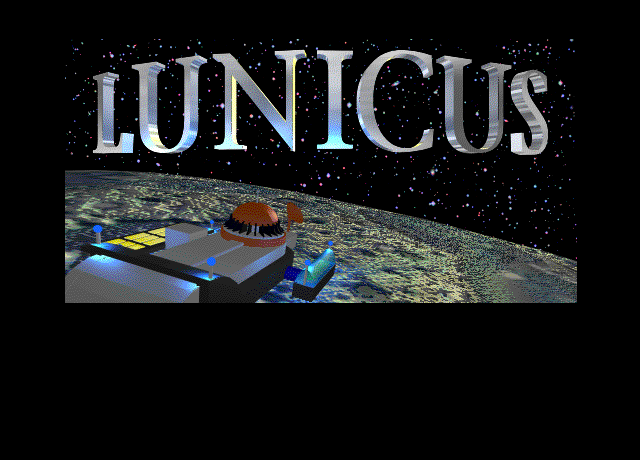
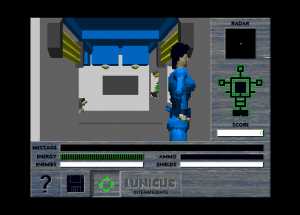
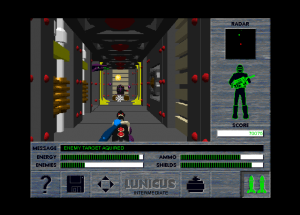
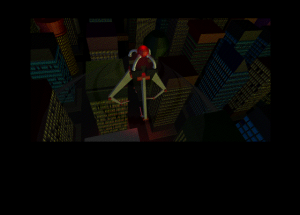
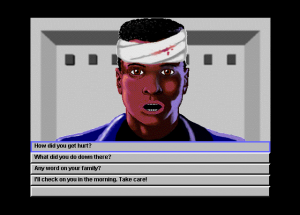
The ending looks like it was going to have multiple endings but they were rushed for time.
With the crew to talk to, mission briefings, and a living, working ship to explore, this game, in a way, has more atmosphere than Marathon. As a kid I would always follow the schedule and go and eat all my meals at the proper times, etc.
Anyway, would love to see more Cyberflix reviews, especially Jump Raven.
Yeah, even if it’s not all good, they clearly put a lot into the game world. It’s a shame that they didn’t build the more of the core game around those parts.
They got much better at that by the time they released Dust, which is the only other Cyberflix game I’ve played so far. It’s leaps ahead of Lunicus in terms of how compelling the setting is. If Jump Raven is comparable, it’ll be a treat!